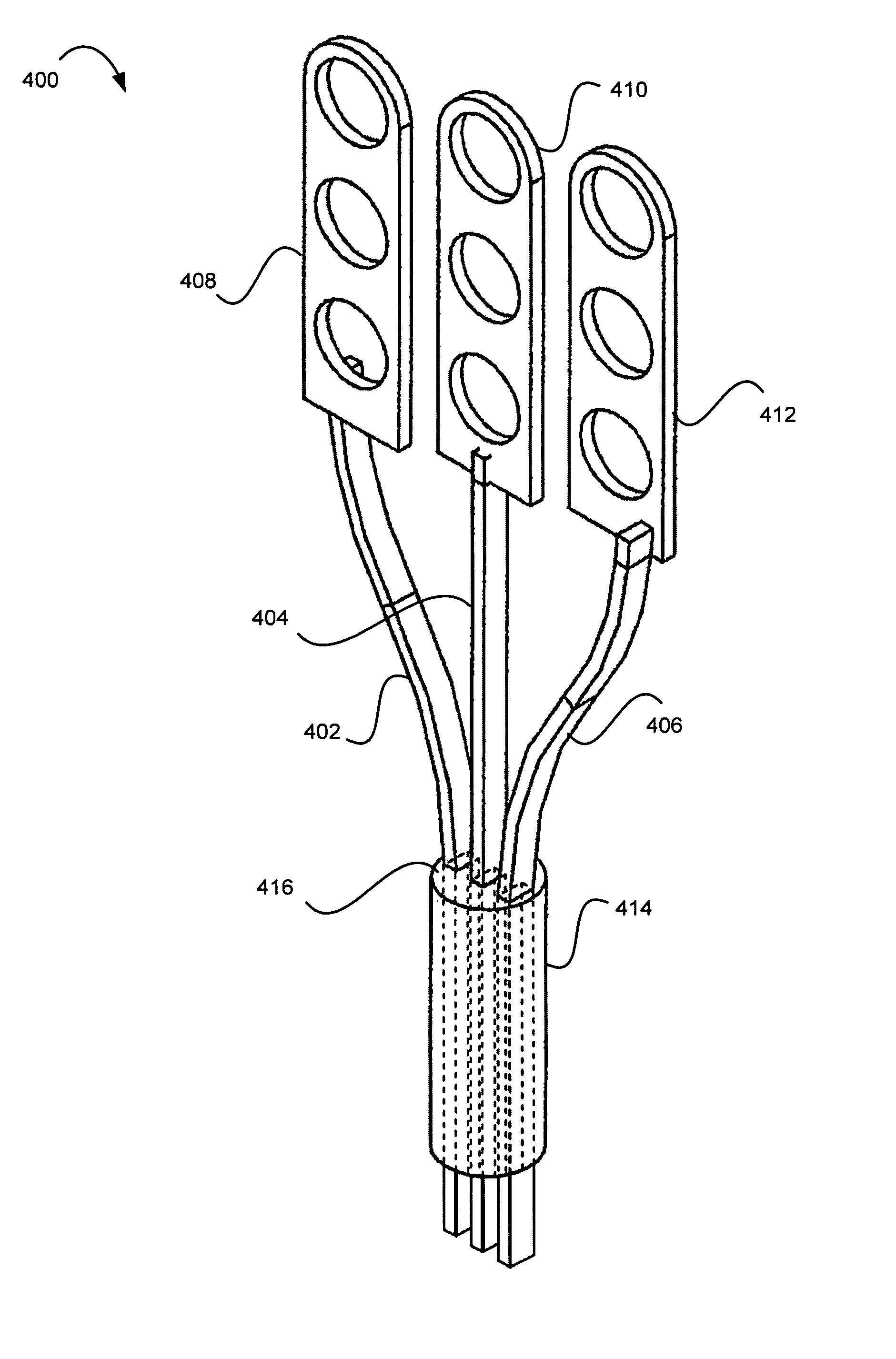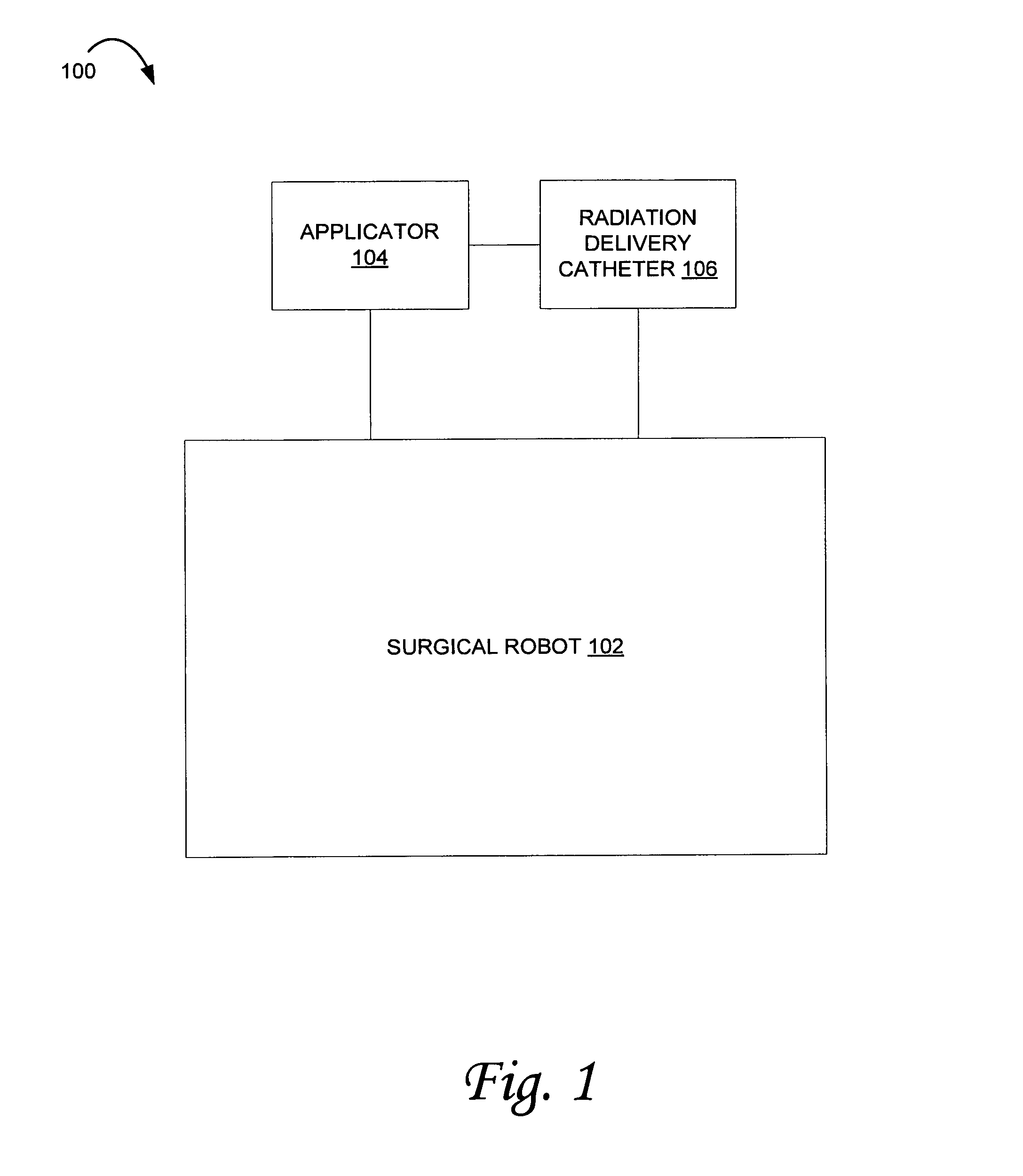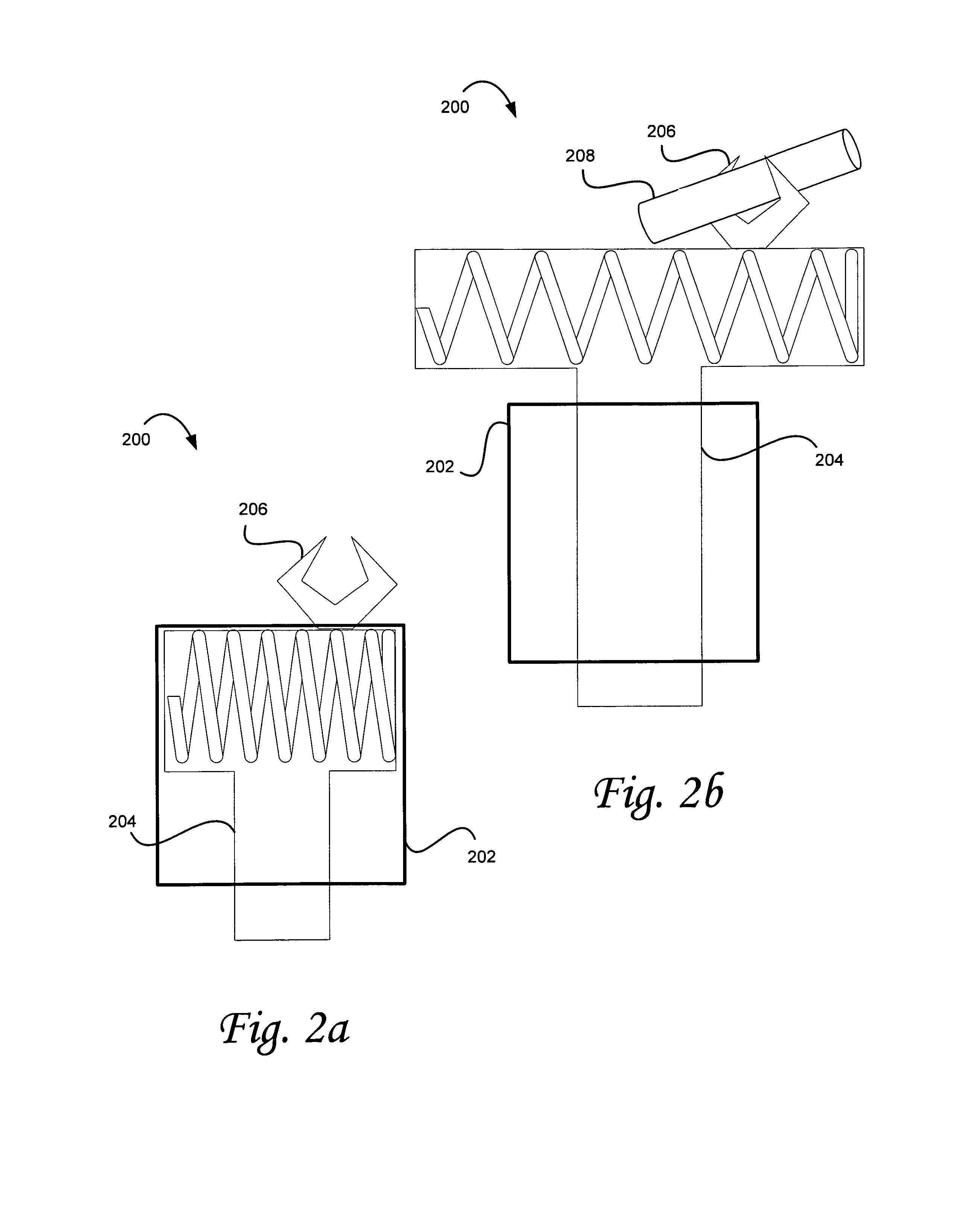Minimally invasive applicators for robotic and non-robotic-assisted intraoperative radiotherapy
a technology of robotics and radiotherapy, which is applied in the direction of intravenous devices, radiation therapy, therapy, etc., can solve the problems of limited expertise to select centers, high capital costs associated with setting up a program, and expensive procedures and protections
- Summary
- Abstract
- Description
- Claims
- Application Information
AI Technical Summary
Benefits of technology
Problems solved by technology
Method used
Image
Examples
Embodiment Construction
[0010]The present invention, in some embodiments thereof, relates to an applicator for manipulating one or more catheters carrying a radiation generating device, for delivering a radiation field to a target, the applicator being characterized by a spring mechanism, which settles into a predetermined arrangement, when moved out of a sheath, designed for covering the spring mechanism.
[0011]An aspect of some embodiments of the present invention relates to an applicator for manipulating one or more catheters carrying a radiation generating device, for delivering a radiation field to a target, the applicator having a proximal end and a distal end. The applicator includes: a spring mechanism; at least one catheter grasper for grasping one or more catheters carrying a radiation generating material, the catheter grasper being attached to the spring mechanism; and a sheath, for covering at least a portion the spring mechanism. The spring mechanism is designed for being retracted within the s...
PUM
 Login to View More
Login to View More Abstract
Description
Claims
Application Information
 Login to View More
Login to View More - R&D
- Intellectual Property
- Life Sciences
- Materials
- Tech Scout
- Unparalleled Data Quality
- Higher Quality Content
- 60% Fewer Hallucinations
Browse by: Latest US Patents, China's latest patents, Technical Efficacy Thesaurus, Application Domain, Technology Topic, Popular Technical Reports.
© 2025 PatSnap. All rights reserved.Legal|Privacy policy|Modern Slavery Act Transparency Statement|Sitemap|About US| Contact US: help@patsnap.com



